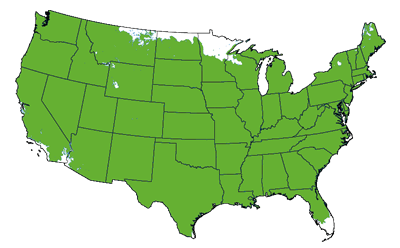Everbearing Strawberry
Everbearing Strawberry
Low-Maintenance Plant with Bountiful Strawberries for Months!
- Delicious strawberries that grow from summer to first frost
- Requires little care and maintenance
- Resistant to many issues faced by other varieties
- Grow your own strawberries at home, free of pesticides


Product Details
 Growing Zones 4-9
Growing Zones 4-9
| Soil Type | Well Drained |
| Sunlight | Full |
| Drought Tolerance | Semi |
| Mature Height | 1 Foot |
| Mature Width | 1-2 Feet |
| Growth Rate | Slow |
| Shipping Restriction | AZ |
Growing your own strawberries has never been easier! With the Everbearing Strawberry Plant, you can have your own strawberry patch in your backyard. Grow plump, delicious strawberries that are free of pesticides and chemicals.
This plant is called Everbearing for a good reason. It gives you months of strawberries, unlike other varieties. From summer to the first frost, you can enjoy a bounty of sweet, fresh fruit!
Since it requires little care, it’s perfect for those just getting started on their own garden or backyard orchard. You can plant it in containers, raised beds, or even on your deck or patio! You may want to plant more than one, since this gives you so many strawberries.
Plant this in spring or summer, and you can have your own home-grown strawberries within the first year! Enjoy fresh fruit salads, smoothies, pies, and more. Gift strawberries to neighbors and friends as a sweet treat!
Order your Everbearing Strawberry Plant now so you can soon enjoy your own strawberry patch!
What issues should I look out for, with this plant?
Common pests and diseases include slugs, moths, fruit flies, chafers, Strawberry root weevils, Strawberry thrips, Strawberry sap beetles, Strawberry crown moth, mites, aphids, and others. This plant is also subject to damage from gray mold, rhizopus rot, and leather rot. The Everbearing Strawberry Plants can also develop disease from temperature extremes during winter.
What wildlife may affect this plant?
Birds love your strawberries! Protect them with some means of wildlife netting or bird nets.
Planting
The best time to plant Everbearing Strawberry Plants is in early Spring. Cover the roots with soil, leaving the crown of the plant at the soil’s surface. During the first season, remove all blossoms from June-bearing plants. This will make your Strawberry harvests larger and the plants will send out more runners in subsequent seasons.
Try to plant on a cloudy day or during the late afternoon. Set the Everbearing Strawberry Plants in the soil so that the soil is just covering the tops of the roots. Do not cover the crown. This plant prefers a soil rich in all the basic nutrients, with a pH of 6–6.5. Since they are susceptible to root rot, they must be planted in well drained soil with crown set at soil level.
Watering
When watering your plants, be sure to water only the roots and not the leaves, as moisture on the leaves encourages growth of fungus. Ensure that the Strawberries are grown in an open area to prevent fungal disease from occurring.
Fertilizing
Start with a rich, organic soil. Apply a balanced fertilizer (10-10-10) at planting at the rate of one pound per 100 sq. ft. Fertilize again after renovation of June bearers or second harvest of day neutrals and Everbearing Strawberry plants types. Do not over fertilize or you will have excessive leaf growth and poor flowering. Do not fertilize Everbearing Strawberry Plants late in the season in colder climate to prevent new growth that will be damaged by frost.
Maintenance
You should regularly prune your Everbearing Strawberry Plants to maintain a healthy grow cycle. In addition to the watering and fertilizing, it is important to keep your Everbearing Strawberry Plant patch weed-free, especially since weeds will steal moisture and nutrients from your shallow-rooted Everbearing Strawberry plants very quickly. Keep your berries harvested, and remove any rotting fruit immediately.
Pollination: Spun-bonded row covers may also be used to speed harvest. Row covers are applied at the time of winter mulch removal and are left in place until flowering begins. This practice can speed harvest by as much as a week. Row covers must be removed at the time of flowering so pollination can occur. Fruits normally mature 28 days after pollination.








